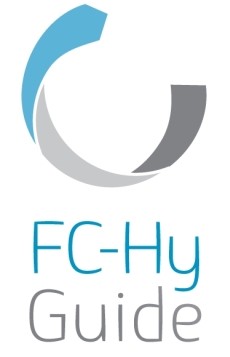FC-HyGuideGuidelines for Life Cycle Analysis of Fuels Cells and Hydrogen
Even environmentally benign technology must be questioned with respect to the life cycle impact on the environment. After all, many materials used today are ‘exotic' and little information is publicly available on potential pitfalls, for instance in mining and manufacturing processes. Fuel cell developers need tools to be able to evaluate and optimise the impact of their products. This allows for the design of products to eco-design requirements. Replacing one material by another may result in considerable savings in impacts and emissions. Similarly, the source and production process of the hydrogen fuel needs careful analysis in calculating the direct and indirect emissions during fuel cell operation. The project FC-HyGuide, by the Fuel Cell and Hydrogen Joint Undertaking (FCH JU) has taken up the task of compiling transparent and standardised data and work sheets for the environmental analysis of fuel cells and hydrogen production. Project developers and evaluators have received clear guidelines on how to assess their projects using simplified and well structured tools. Draft results were presented to external experts, intensely discussed, and tested for completeness and practicality on case studies before being released to the general public. One important application of the project results was the standard assessment of the FCH JU's own projects with respect to their environmental benefits. The work sheets developed track all materials necessary for manufacturing a fuel cell system, the emissions from operation (direct and indirect), and even cover the end-of-use recycling phase. The work sheets can be applied to fuel cells for stationary and mobile applications, for instance those used in the Callux und CHIC projects in residential heat & power supply and in fuel cell buses, respectively.
PLANET closely cooperated with the universities of Naples, Split, Graz and Athens, in order to compile data and work sheets for different fuel cell types. These included the low temperature polymer type (PEFC), as well as the two high temperature variants, molten carbonate and solid oxide fuel cell (MCFC and SOFC). PLANET contributed knowledge on materials and manufacturing processes of fuel cell systems and its extensive know how in environmental analysis. PLANET thereby builds on its profound know how in the field of Life Cycle Analysis (LCA) and environmental analysis. As early as 1999 PLANET commissioned a thesis on the analysis of the environmental impact of various routes for hydrogen vehicle fuel production. In the following years PLANET frequently returned to the topic, for instance in the NaturalHy project. Not unexpectedly, it was found that a sustainable supply of hydrogen has to build on renewable energy input.
|
The project has 11 partners and ran from October 2010 until September 2011. Coordinators were the Italian energy research institution ENEA and PE International, a consultancy in sustainability from Germany. http://www.fc-hyguide.eu/ |
|
|

|
